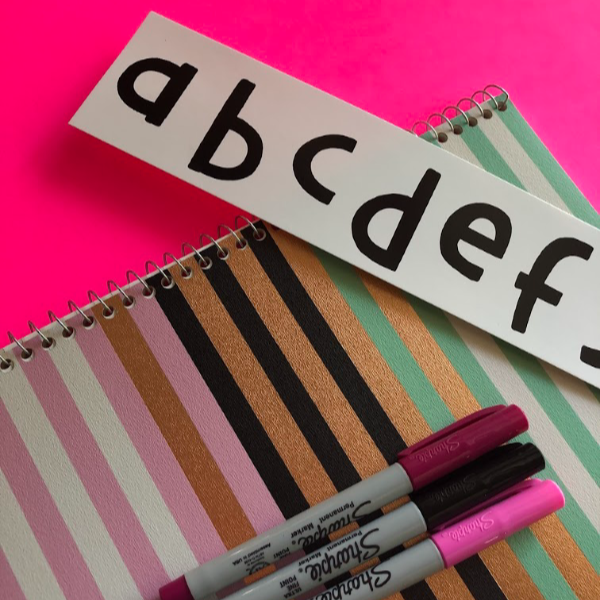10 Effective Ways to Prove You Are in Charge of Your Classroom

I know you are wondering, are there really 10 ways to prove to my students, (and their parents), and my principal that I am “in charge of my classroom?

Yes, there really are.
- Create a neat, orderly classroom.
- Teach your students to walk nicely in line.
- Help your students know to NOT blurt out when a visitor enters the room.
- Have your rules posted.
- Have your daily schedule posted.
- Help your students get seated and settled when going to an assembly.
- Discipline students immediately that are being disruptive in public places (lunch area, assemblies, playground).
- Take care of playground issues when you are on duty.
- Insist that students verbally respond when asked something,
- ALWAYS BE FAIR!
NOW I’LL GIVE YOU THE DETAILS
#1. CREATE A NEAT, ORDERLY CLASSROOM. What better way to look in control of “the situation” than to have your classroom neat and orderly? Now, I’m not talking about pristine. But, can you put a few stacks in a cupboard?
Can you ask a student to straighten the shelves and supplies? Ask your students to clean up the floor around their desks before lining up at dismissal time. Take a quick 30 seconds to straighten up the “Instructional table.”
I wrote another post about setting up your classroom. Take a look if you’d like to learn how I set up my classroom each August. It’s called:
Steps for Launching Your Perfectly Organized Classroom.
And if you would like your own guide to this classroom setup, sign up below and I will send it to you right away.
**
How about your desk? Have you dumped out your cold coffee? Did you
#2. TEACH YOUR STUDENTS TO WALK NICELY IN LINE. Now, think about if you were a parent visiting your school for the first time. And you saw two classes in the same grade-level making their way to the cafeteria for lunch.
Controlling student behavior demonstrates that you are in charge!
One class had the students in a nice straight line with students walking calmly and relatively quietly wth their teacher at the back of the line. While the other line had kids playing around, laughing, walking two or three abreast with lots of gaps between students while their teacher is in the front of the line not paying attention to what is going on behind him.
Neither group of students are being bad, and odds are both teachers are fairly good teachers. As a parent visiting the school, what would you be thinking as you watched both of these groups of students.
I bet you would be thinking that you want your child in the first classroom when they are that age. Because, as humans, we truly do like things to be orderly.
You might be interested in my FREE “Classroom Routines Checklist.”
**
#3. HELP YOUR STUDENTS KNOW TO NOT BLURT OUT WHEN A VISITOR ENTERS THE ROOM. When I was a principal, and did informal “walk through visits” I had numerous classes where one or two students would blurt out of turn when I walked in the room. Most of the time they were only saying “hello” to me, and while this is nice and friendly (warm feelings here) it caused an interruption in the learning.
There were even a few classes where I had to tell the student myself (as principal) to not interrupt their teachers, that they could smile at me and I would see them.
I was vey impressed with the teachers who had taught their students to continue the lesson (and not blurt out anything) when an adult entered the room unless the adult asked a question, or the teacher stopped to speak to them.
Always have your rules posted.
#4. HAVE YOUR RULES POSTED. It’s amazing what a difference it makes to have your rules up in the classroom. You should have only 3-7 rules at the most. No one needs more than 7 rules. (five would be even better) – this is my opinion here.
But be sure to have them posted on the wall somewhere where you can refer to them, where the students can refer to them, and where visitors to your classroom can spot them.
And it’s best to have them listed in positive words, don’t begin any rules with NO!
So instead of saying, “No talking when the teacher is teaching.” Instead write the rule as; “Raise your hand to speak.” Or something like that. I know some teachers have the students come up with the rules the first day of school. if this is something you do, be sure to help the students combined the “like” ones, and word them in a positive tone.
Want to take a quick look at my cute granddaughter when she was a Kindergartener and had to learn the jingle for their class rules. I think it’s adorable!
add link here.
Post your daily schedule.
#5. HAVE YOUR DAILY SCHEDULE POSTED. Similar to having your rules, posted, having the schedule posted helps your students. Along with giving them guidance of how the day will be scheduled, it is a guide to visitors, substitutes, and even you.
I didn’t always have my schedule posted, but it took me about a year before I realized that I preferred having one up.
The time that made me realize that it’s good for students also, was when I was teaching sixth grade and our team was rotating students for Science. One student told me, “I like coming to your room because you have the schedule hanging up.”
That was an AH-HA moment for me. It made me understand how this simple thing can bring security and a sense of order for some students.

#6. HELP YOUR STUDENTS GET SEATED AND SETTLED WHEN GOING TO AN ASSEMBLY. If your class is walking to the assembly in a neat, orderly lines as mentioned in #1 above, then when you enter the cafeteria (or wherever your school holds assemblies), they will be calm and behaving nicely.
It is just a small step further to get them to make nice orderly rows where they are being asked to sit.
A handy hint for walking to an assembly is to select a very responsible student to be at the front of the line (unless you have weekly line leaders). If you have assigned line leaders, all you need to do is take about two minutes to talk to that student before walking to the assembly and explain the location you want him/her to stop at to wait for your next instructions.
Students don’t automatically know when the “row” is full; especially very young ones. And, once they are a bit older, they try to switch places and scooch in next to their friend.
But if you are right there with them, being “in charge” they will all do what you are politely asking them to do.
Don’t shy away from constructive student discipline.
#7. DISCIPLINE STUDENTS IMMEDIATELY THAT ARE BEING DISRUPTIVE IN PUBLIC PLACES (LUNCH AREA, ASSEMBLIES, PLAYGROUND). Some teachers may worry that they might be labeled the “mean teacher” if they discipline students in public. AND I am talking about disciplining any student, not just your own.
Let me be clear, I am not condoning you scold a child in front of their own teacher, but if you are on recess duty, or walking across campus and you see a child misbehaving, tell them to stop it and to behave appropriately.
I recommend always starting with a calm voice, but if you are being ignored, then get stern. The worse thing you can do is continue walking by while they are misbehaving.
Some little “whipper snappers” will completely ignore adults until you MAKE THEM LOOK AT YOU AND BEHAVE.
#8. TAKE CARE OF PLAYGROUND ISSUES WHEN YOU ARE ON DUTY. There is nothing more frustrating than to have two or three teachers chatting during recess duty instead of watching the students and taking care of issues in their designated area as they arise.
Now, I must admit that I have actually done this once or twice myself. But I would politely walk away most times since it made me uncomfortable to just stand there chatting.
If you are watching diligently, you can often stop misbehaviors before they escalate or turn into a situation where a child is hurt. Tell the group to stop running near the equipment, or stop a game or race that is having too much pushing or rough play; as well as other incidents like this.
Students must verbally respond to your questions.
#9. INSIST THAT STUDENTS VERBALLY RESPOND WHEN ASKED SOMETHING. Whether a student is shy, or having language difficulties, you need to insist that students respond to you when you ask them a question. Begin by teaching them to always answer you and as they gain confidence, branch out to insisting that they answer other people who speak to them on campus.
If a student is holding out on you, and thus slowing down your lesson, do this instead of giving in to him/her:
- Ask the question and pause for him/her to think of an answer.
- Remind him/her that answers are required in your class.
- Pause a bit more.
- Tell him/her you will come back to him/her and you expect an answer.
- Ask a different student the EXACT SAME QUESTION (choose someone that you know has the correct answer).
- Let the class hear the correct answer.
- Go back to the reluctant student and re-state the question.
- If the student still does not respond (after just hearing the correct answer, you know that you are dealing with stubbornness (or a test of wills) YOU MUST NOT BACK DOWN AT THIS POINT or you will lose credibility with the entire class.
- Tell the student calmly that he/she will be required to tell you the answer before he/she can go to recess.
- Take a quick moment to jot down the question and write the student’s name on the board or do something that will remind you to follow through with this when recess arrives.
- NOW MOVE ON WITH THE LESSON.
- At recess, dismiss the class except the reluctant student. When the room is empty, ask the student why he/she is having a hard time answering questions. Ask the question again to see if he/she responds. Keep the student in until he/she does give you a verbal answer. You can prompt by reminding him/her “Luis gave us this answer…” so they again have an answer to copy.
- Do this for as many days as needed until the student starts answering questions.

#10. ALWAYS BE FAIR. All students pick up on whether or not a teacher is FAIR. BE CONSISTENT! Don’t have favorites, (or don’t let your favoritism show). Sometimes there is just one or two kids that pull at your heart strings; for whatever reason, you just love them. Be sure that you treat him/her EXACTLY the same as all the other students.
Plus, if you treat one student better than the others, it makes him/her feel awkward, and sometimes he/she is treated poorly by the other students because of your obvious favoritism.
It takes EFFORT AND FORTITUDE to not show favoritism. But you can do it; your reputation is at risk if you don’t!
Well, those are my 10 ways to be in charge. Do you have a few others? I’d love to hear yours.
Your Teacher Buddy






